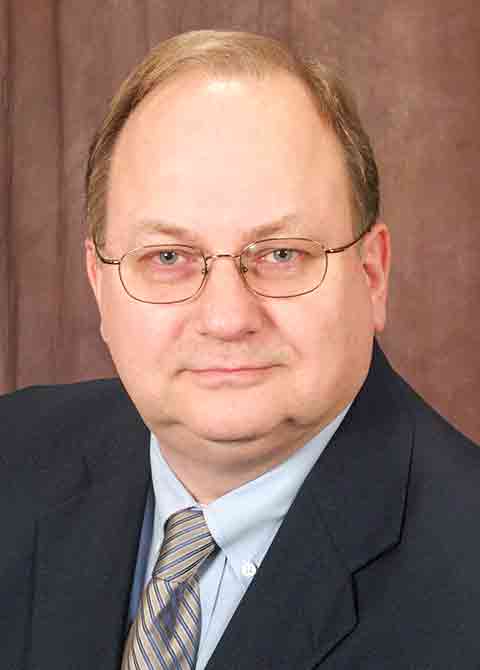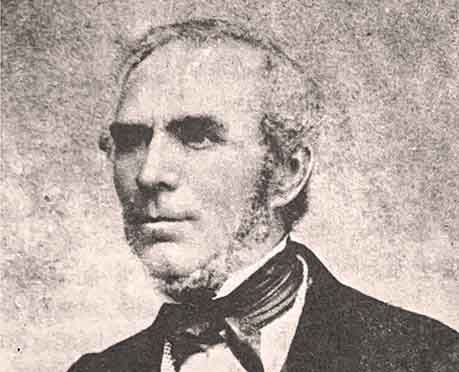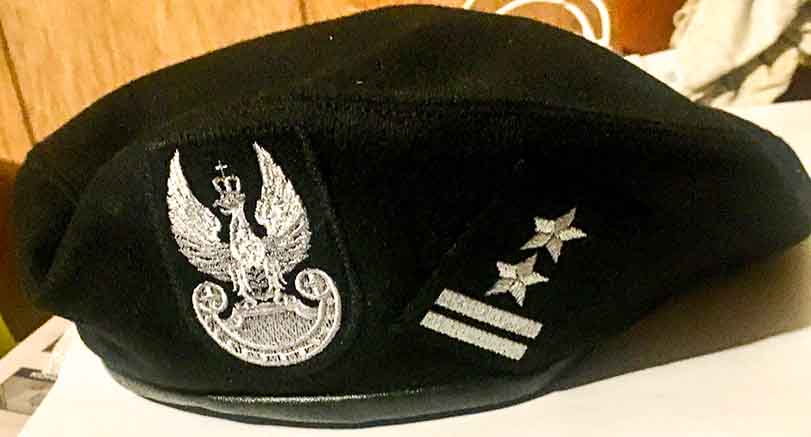Soon, the Poles in Wisconsin will celebrate almost 200 years. Count Wincenty Dziewanowski, a participant in the November Uprising, was the first to come to Avoca in 1838 after almost three years of wandering around America in search of the land promised by the American government. With the money he earned working on lead smelting, he bought a farm, founded a housing estate, which he patronized.
The first large Polish settlement in Wisconsin and the second in the United States was Polonia, in Portage County, in the 1850s, founded by Fr. Józef Dąbrowski, the creator of the famous seminary for American Polonia. Michał von Koziczkowski also worked there, where Polish settlements flourished in the Stevens Point environment and today 75% of the population has Polish origins. Where at the crossroads you can still find roadside shrines — places for prayer. It was here that Cardinal Karol Wojtyła made his pilgrimage on August 23, 1976.
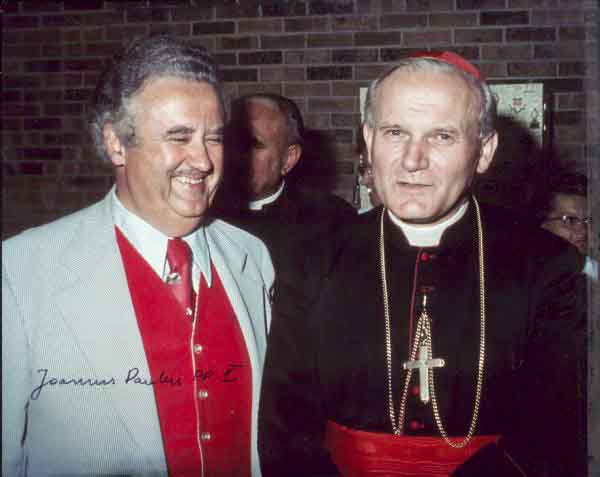
University of Wisconsin-Stevens Point Chancelor Lee Sherman Dreyfus amd Cardinal Karol Wojtyła. In 1978, Cardinal Karol Wojtyła became Pope John Paul II (Source: UW-Stevens Point)
In Wisconsin, every ninth person has Polish origin, but the lack of ability to use the Polish language and being cut off from the old country resulted in the rapid assimilation of this group. From the mid-nineteenth century, Wisconsin, Milwaukee and its vicinity were settled by peasants from the Prussian partition, who were expelled by the Prussian government from their ancestral land — Polish land. With them came priests who were spiritual, administrative guides and group leaders. Charismatic Catholic and national priests worked here: Wacław Kruszka, Józef Dąbrowski and many others. They gathered Polish emigrants around the churches they built, next to which there were schools preparing children for life in a new homeland and in new cultural and economic conditions.
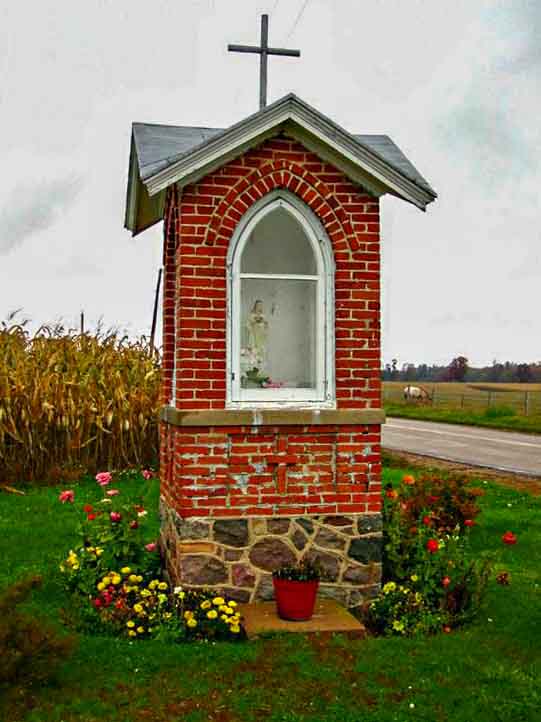
The Polish Heritage Trail in Wisconsin (Source: travelwisconsin.com)
In Milwaukee itself, which soon grew into the center of the state, Polish emigrants left 18 beautiful historic churches in terms of architecture and spiritual culture, where the priestly ministry was performed by leaders and initiators of many projects bearing fruit to this day. The first generations worked out positions for their successors, who held positions at the local-state level (Michał Kruszka - the first Polish state senator, founder and editor-in-chief of Kuryer Polski) and at the federal level Klemens Zabłocki - the most famous US congressman), judges as well as the dean of law at Marquette University Franciszek Świetlik, lawyers, publishers, business owners, famous artists such as the queen of shimmy Gilda Gray (Marianna Michalska) and scientists. Here in Lake Michigan Kashubians fished.
Without the economic, military, diplomatic and moral support of Polish emigrants, especially those from the United States, Poland would not have gained independence so quickly, would not have cut down its borders in such a shape, would not have achieved such development during the 20th anniversary of its independence. The Polish community in Wisconsin was equal to, and sometimes even surpassed, the Polish community in Chicago. It was here that the daily newspaper Kuryer Polski (1888-1962) was published, which covered the entire United States and published many materials also in English. This is where the North Star comes out to this day. Every generation of Polish immigrants worked for Poland.
In Milwaukee, we reactivated the idea of Kuryer Polski, which after 3 years of existence is transformed into a biweekly with substantive articles about the Polish community, its history and cooperation and development of Poland. Kuryer Polski has become the most important Polish community project in Wisconsin. Polish diplomats, politicians and local Polish community activists have various problems with this, because Kuryer promotes its bilingual narrative, which is not associated with any political option in Poland or in the USA and reaches an ordinary American audience.
We refer to the great card in the fight for Polishness and independence played by Wisconsin and the entire American Polonia. More than 1,000 volunteers were sent from Wisconsin to the Blue Army, it was here that the famous Millennium stamp with a crowned eagle with a cross was created. Polish organizations, societies, choirs, theaters and Polish businesses operated here. Here, the idea of a basement was transferred from Poland, so that the Americans could discover the so-called "Polish Flat", i.e. an apartment in the basement of a house, because the top was for rent. Here, the Basilica of St. Jozefat and numerous other Polish churches attract with their beauty.

The interior of the St. Josafat Basilica in Milwaukee (Source: thebasilica.org)
It is worth mentioning that the first person who wrote about Inka Śledzikówna and the "cursed soldiers" was Col. Edmund Banasikowski (charismatic president of KPA in Wisconsin) in his book To the Calling of Vilnius Lands (Na zew Ziemi Wileńskiej). It is here that the most important book of Polish geopolitics on Intermarium was created: "Józef Piłsudski, European Federalist, 1918-1922" published in English by Hoover Institution Press, Stanford University, in 1969. The author of this important book was Marian Kamil Dziewanowski, writer and journalist, participant in the September Campaign, officer of the Polish Armed Forces in the West, professor at the University of Boston and the University of Wisconsin in Milwaukee.
It is in Milwaukee that Prof. Donald Pienkoś, political scientist-witness to history and participant in the process of Poland's accession to NATO, who often has to remind Poles in Poland that it was the President of the Polish American Congress, Edward Moskal, who collected 9 million signatures on the petition on Poland's accession to NATO, signed by millions of American citizens — Polish Americans. Professor Pienkoś is the most eminent historian of the American Polonia and the author of many professional publications.
In Wisconsin, we have an excellent Polish-speaking Major General of the US Army, Ernest Lityński. In November 2011, Ernest Lityński received the Congressman Clement Zabłocki Heritage Award and was awarded the Paderewski Medal (awarded by the SWAP chapter). The Consul General of the Republic of Poland, Robert Rusiecki, presented Colonel Ernest Lityński with the Star of Iraq and the Star of Afghanistan awarded by the President of the Republic of Poland.
What to do to keep Polishness in Wisconsin?
First of all, it is important to recreate the "connectivity" process, i.e. recreating Wisconsin's connections with Poland. The next stage is teaching Polish at American universities. During my March visit to Poland, we had many meetings at MEIN and the Center for the Development of Polish Education Abroad.
I talked for a long time with Małgorzata Kamińska about the possibility of installing Polish language teachers at universities in Wisconsin. We talked about helping to recreate Polish education in the Saturday system. It is necessary for the Ministry of Foreign Affairs to install the Honorary Consul of the Republic of Poland in Wisconsin. It is also important to launch Polish-American business based on the creation of a Polish-American Chamber of Commerce. There are global and local businesses in Wisconsin that have been in contact with Poland for many years. In 2020, i.e. during the pandemic, exports to Poland amounted to approx. USD 84 million.
The integration of the old Polonia with the Polish state can take place through the concept of sister cities. Polish programs should also be introduced to American universities. "Przystanek historia" run by the Institute of National Remembrance could exist in English in cooperation with UWM in Milwaukee. It is worth considering how to use the "Pole's Card" program to restore the Polish identity of the old Polish community. It is necessary to digitize Kuryer Polski, from which we can recreate the history of Polishness in Wisconsin. It is necessary to conduct research on the Polish community in Wisconsin. Numerous archives are still lying in cardboard boxes and are unavailable to American researchers, because the archives are most often written in Polish.
The May visit of the Minister of the Polish Diaspora, Jan Dziedziczak, may be the proverbial spark that will ignite the Polish fire in Wisconsin again. Before the visit and all the problems I have outlined, it is worth gathering around the case all those who can do something about it. You can take a lot of photos with people who like to have a photo with a Polish politician. Personally, I like to meet people who do a lot of concrete work, and not just utter neat slogans.
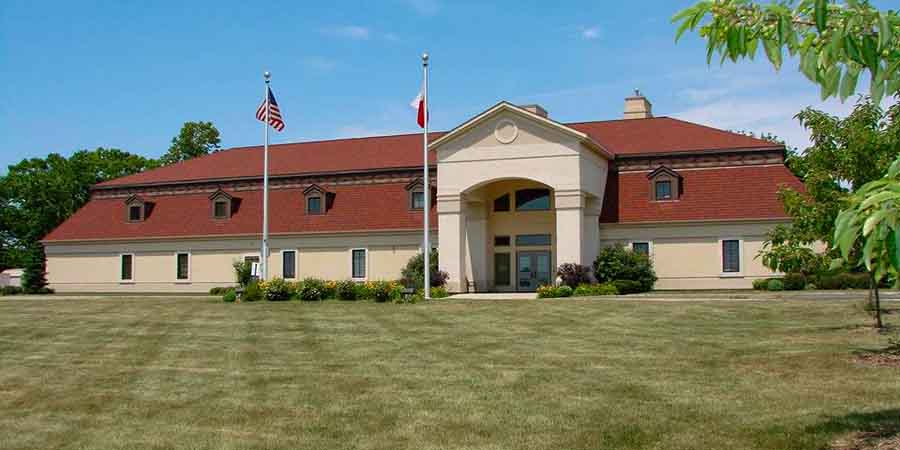
The Polish Center of Wisconsin in Franklin, near Milwaukee (Source: PCW)
Another event will be the June funeral of Col. Leonard Jędrzejczak in Milwaukee. He is the last veteran of the Polish Armed Forces in the West, whose farewell with military assistance could be a great example of a manifestation of Polishness in Wisconsin.
According to the latest research by Dominik Stercula from Colorado State University, 95% of American Poles were born in the United States. They usually do not speak Polish, but they always admit to being Polish and are proud of it.
In Poland, after 2016, many institutions were established that set themselves the goal of working with the Polish diaspora. However, it is important to understand that books and various educational programs should be aimed at the young generation. And this generation does not like multi-page narratives. Other forms are better, and we should talk about them together. Not involving the Polish community intelligentsia in the active participation in the process of evaluating such programs is an obvious mistake.
Whether Polishness in Wisconsin will survive depends on the leaders in Warsaw, in the consulate in Chicago, the leaders in Wisconsin. Can they come up with a logical and practical program? Kuryer Polski, in accordance with its mission, will suggest ideas and encourage the creation of connections between Wisconsin and Poland.



